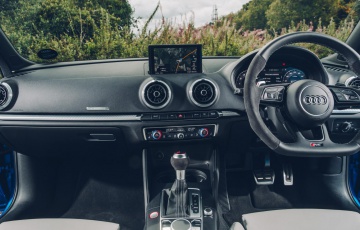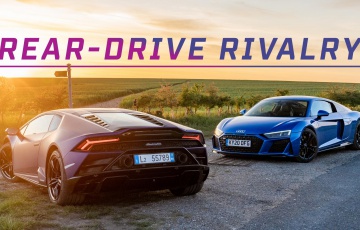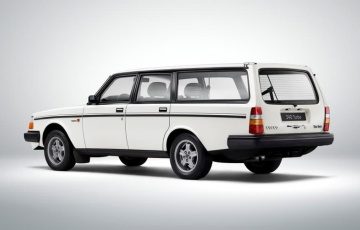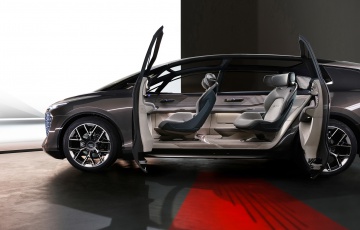High on 5s : Audi Ur-quattro & RS 3 Driven [review]
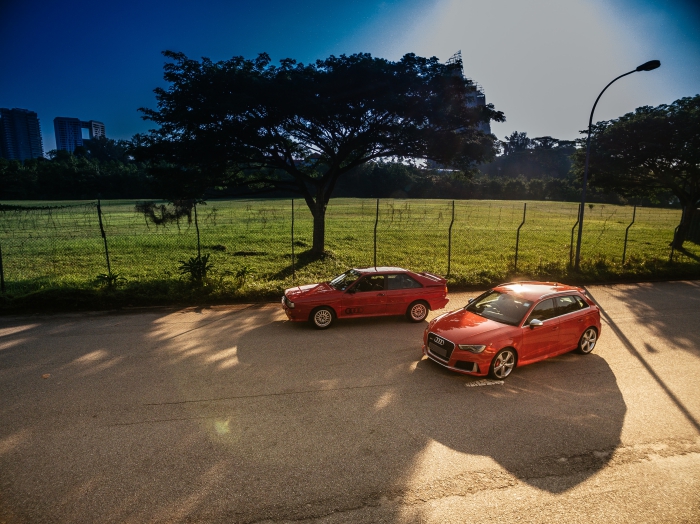
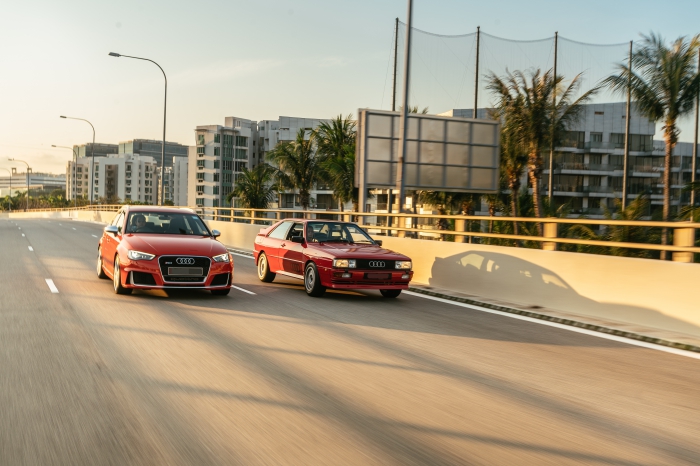
SINGAPORE - Turbocharged all-wheel drive sportscars are relatively commonplace today, especially with the trend towards engine downsizing; the fact that a turbo’d engine packs a bigger punch than its naturally-aspirated counterpart doesn’t hurt its cause either.
Moreover, modern differentials and dynamic yaw management mean all-wheel drive no longer needs to mean ‘slow and steady’, since such trick drive systems are capable of making a car as rear- (or front-) biased as you like (or can handle).
Yes, Audi Sport Quattros of the infamous Group B rallying era and JDM cult classics like the Subaru Impreza STI and Mitsubishi Lancer Evolution wreaked havoc in rallies all around the world, but you’d be surprised at the people who still think proper sportscars can only be rear-drive.
We reckon that all the drive-types can work well in the hands of someone who knows what he (or she!) is doing.
With new sportscars doing almost everything for you (save stop-go-steer, but they’re working on it!), it’s not difficult to be seduced by the ease of going fast into thinking we have become driving gods.
With the proliferation of forced-induced engines, a casual observer might think that high-revving nat-asp engines have all been but eradicated from our motoring collective.
However, seek solace in the fact that they are still offered by a handful of marques in models that operate in the rarefied sportscar realm where you'll need to 'pay to play'.
Contrast this to the 1980s, where something turbocharged and all-wheel-driven like the Ur-quattro was an exotic exception rather than the norm, and would lay down the blueprint for Audi’s future S and RS models.
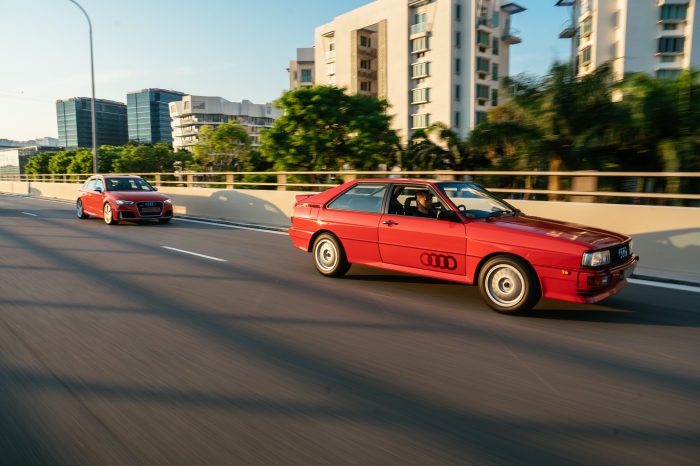
Audi Ur-quattro
You know you’re in a proper ‘exotic’ when the sight of our Rosso Corsa car (it was originally an Amazon Blue before the current owner resprayed it) rolling by gets grown men and young children gawping.
No, we’re not referring to the latest model from the usual supercar suspects, since those are plentiful if you’re patient enough to lurk around Millenia Walk.
The fully hand-built car we’re in is far more rare, because it’s the only one of the original trio of Quattros left road-registered in Singapore – the last time we received this sort of attention, we were in another 80s icon.
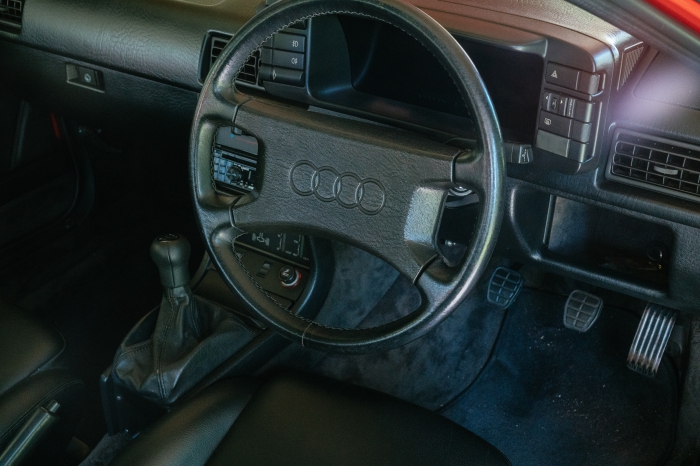
We warp back in time in this 1985 Audi Quattro Turbo Coupe, Ur or Ur-quattro for short – it’s referred to as Quattro (with big ‘Q’) to honour its championship credentials and status as great-granddaddy of all the new quattro (small ‘q’) models.
The Quattro was intended to dominate the gruelling World Rally Championship with its fiery combination of turbo’d engine and four-wheel-drive. Its powertrain was inspired by the VW Iltis, an all-wheel-driven German military alpine transport, and was adapted to the Audi 80 Coupe to take advantage of new WRC regulations permitting four-wheel drive entrants.
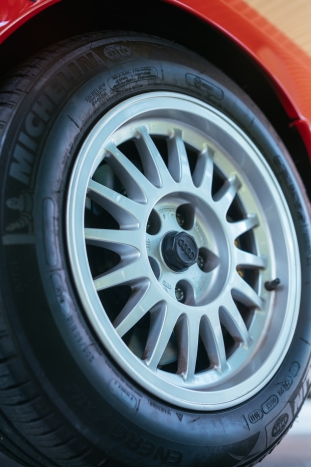
To put things in perspective, its arch-contemporaries from BMW and Mercedes-Benz, the rear-drive E30 M3 and 190 E 2.3-16, were powered by naturally-aspirated four-pots.
Like them, the Ur features boxy-styling redolent of the era, with prominent front and rear fender flares for the use of wider tyres – like the E30 – if so required (instead of flared fenders, the Merc featured fender extensions in this first iteration of the 16v models, but this would grow through the years).
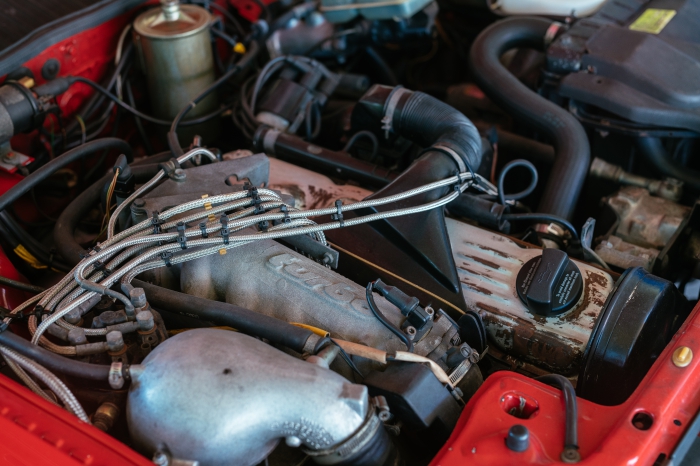
The Quattro would see the service of several engine variants throughout its life-cycle, with this particular ten-valve ‘WR’ displacing 2144cc (subsequent cars would displace 2226cc and evolve from ten-valves (‘MB’) to 20 (‘RR’) from mid-1989 onwards).
Audi inflicted abusive running tests on the Ur to work out any mechanical and quality kinks. Up to recently, the only other model to endure such a gruelling onslaught was the first generation R8…
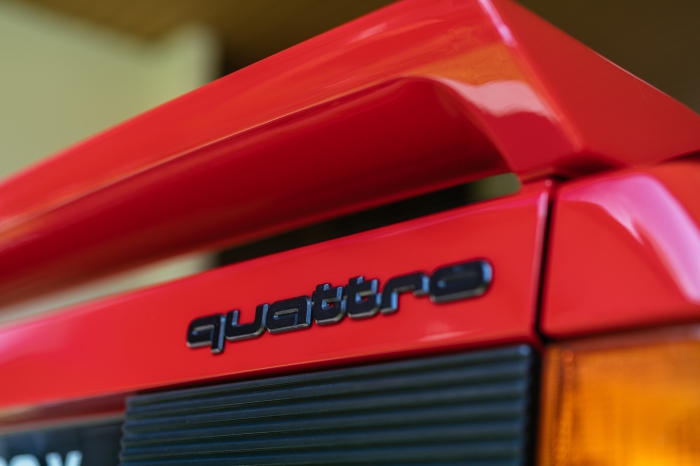
We were lucky to have driven in anger both a ten-valve Ur and Sport quattro through some wicked alpine passes and what they lacked in outright stomp-and-go performance, they made up for in personality.
Why? Well, it depends on your approach to driving – to us, the challenge is in working with the car’s chassis, balancing power delivery, brakes and steering delicately to get around a series of corners as cleanly and quickly as possible.
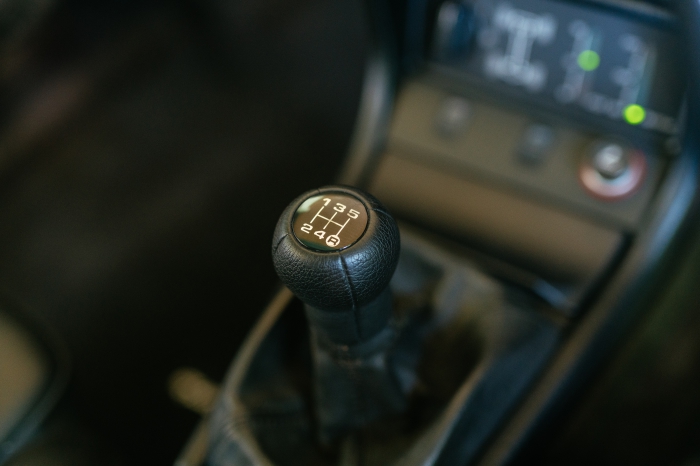
New sportscars have such high limits more useful to a race-track, it’s no longer a challenge to drive them quickly on public roads, because you can’t safely come close to these limits.
With cars like the Ur, coaxing the chassis and cajoling the car to carry a little more speed through the corner is always satisfying, especially if you string together a few in quick succession.
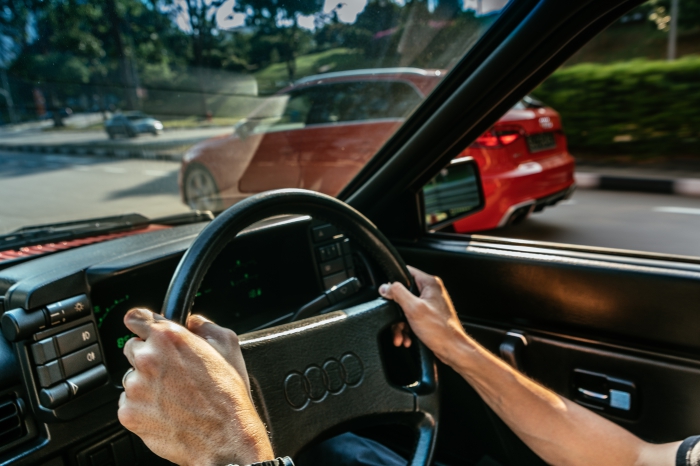
There’s a Zen technique to achieving brisk progress in the Ur; the shifts are unhurried and you work with a rhythm that’s not your own, but the car’s.
On both this and the Audi Museum cars we’d driven before, it takes awhile to get into the car’s groove before you begin to chuck it around, but they are so analogue, so unassisted, so unadulterated you’re constantly in the thick of things.
Don’t forget, this is before the rigid shells and sophisticated suspension systems of modern sportscars, so you feel and appreciate the flex and roll of the car and the sheer organic nature of the driving experience as the Ur ebbs and flows over the undulations.
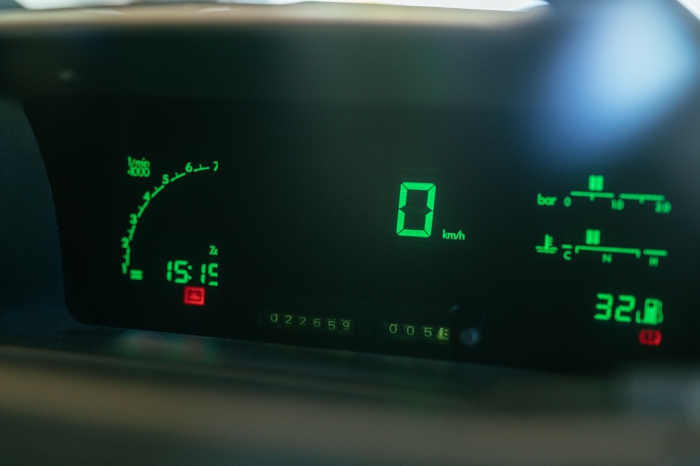
With such cars, you’re never concerned about straight-line speeds, so you barely pay any attention to the green-lit digital dash. Why would you? There’s so much to learn from the information that’s bombarding you through the thin-rimmed steering wheel, body leans, weight shifts and delicate bobbing and diving of the Ur.
The disembodied Patrizia, a synthesised dominatrix ghost-in-the-shell intended to alert the driver to lapses in the car’s well-being, brings new meaning to the term ‘electronic nanny’.
Unfortunately, she’s long been silenced – after all there’s good reason you take long drives alone, and seldom with the wife in tow...
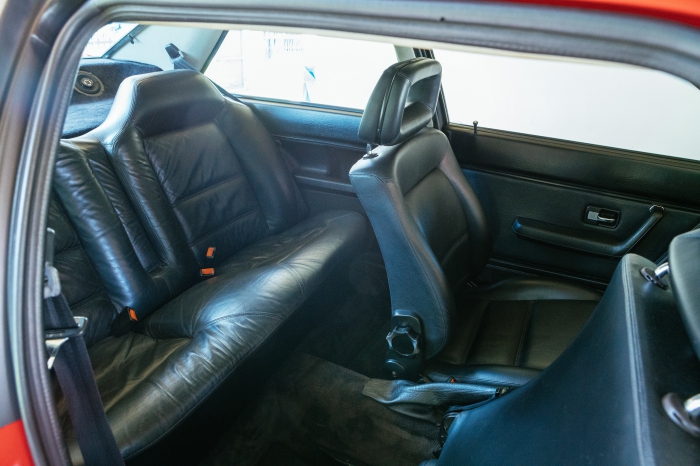
Like older turbo cars, the Ur’s boost builds slowly at about two-grand-plus rpm but starts to pull strongly from above three grand, so there’s enough oomph to get you wafting about in the city even if you decide to shift up before 3000rpm.
Unlike the E30 M3 and 2.3-16 that thrive on high rpms, the Ur is best enjoyed in the mid-range boost zone, as you quickly learn to keep the revs in the sweet spot as you navigate the long and winding roads.
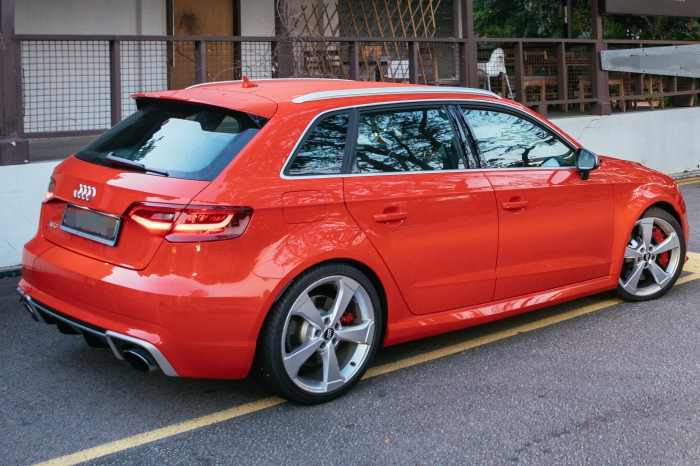
Audi RS 3 Sportback
Compared to the mellow bellow of the Ur’s five-cylinder engine, the RS 3 is all about hell-raising, shouty teenage angst, as the Calypso Red upstart fires to life with a rousing clap of thunder, complete with all the requisite snaps, crackles and pop-pop-pop as it idles restlessly.
We’ve been huge fans of Audi’s charismatic 2.5-litre five-cylinder since last generation’s TT RS and RS 3, but the vehicles it was in never quite stirred our fancies.
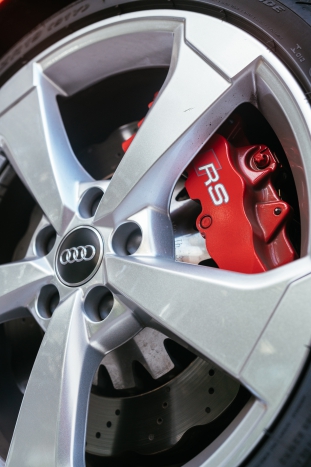
This time around, it finds a home in the latest Sportback iteration of the RS 3 and from our drive, it doesn’t seem to have lost any of its firecracker character.
If anything, it rouses readily to anger and gives you a big boot up the behind from above 1600rpm, which is as far removed from the character as an old-school turbo as can be.
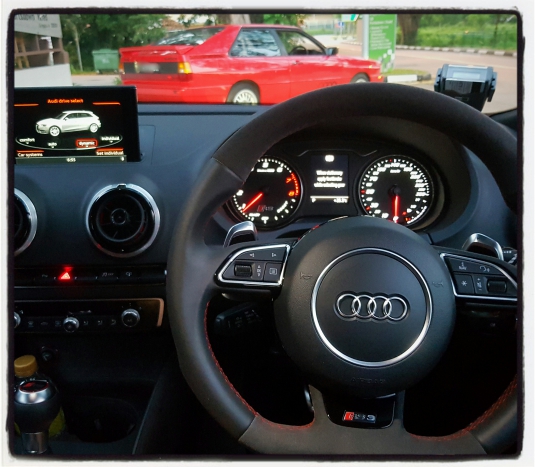
The Ur’s digital dashboard, synthesised status and powertrain innovations may have been ‘fresh’ for its time, but then the rest of the cabin is so functional it borders on minimalist, since there are no frills or frippery to distract you from the business of driving, and don't forget the Ur was Audi's crowning glory back in the day.
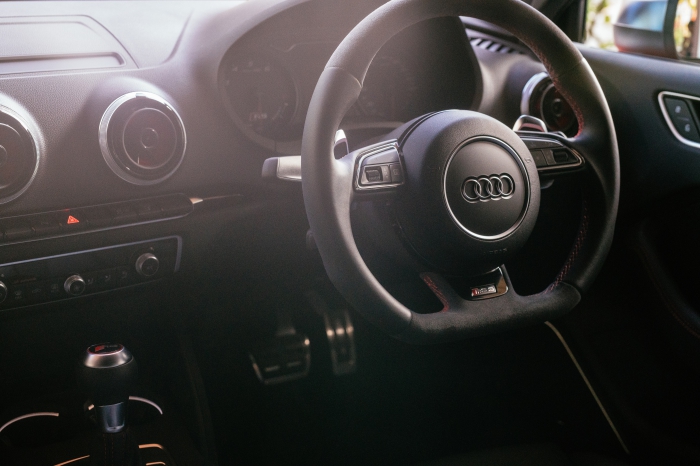
In the RS 3, the cabin is largely black, but the subtle red accents from the air-con vents and contrast stitching highlight the RS’s sporting nature, as does the chunky leather/Alcantara steering wheel.
It’s keyless from unlock/lock to engine start/stop, and steering wheel controls for everything – from infotainment to Drive Select – including paddle-shifters, which ensure you’ll never have to take your hands away from the helm.
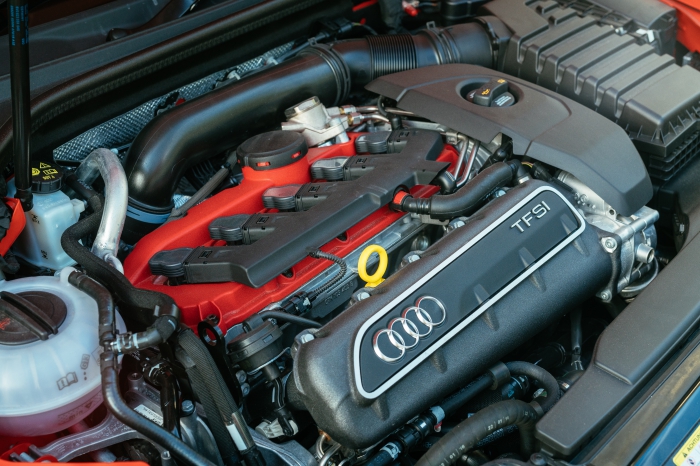
The lightning-quick 7spd dual-clutch gearbox makes light work of city driving, but you can’t help but feel the engine is frustrated at the lack of blistering progress, since the RS 3 is one of those cars that is eager and willing to run wild all the time.
Compared to the natural, offbeat burble of the Ur, the RS 3’s engine sounds like it’s been turned up a couple of notches to loud-Louder-LOUDEST, especially with the sports exhaust.
But gosh we’re not complaining because it’s not one-dimensional shouty like the four-pot in the 45 AMGs, but is an evocative Vodka-like blend of smooth civility and raging roaring hormones as it homes in for the kill.
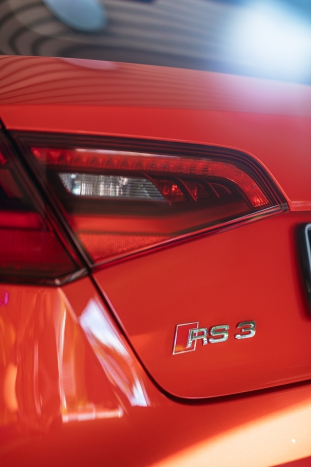
In contrast to the Ur, everything feels clinically digital on the RS 3, which is no bad thing, because it does as commanded.
If there’s one thing we’ve learned, it’s that many folks these days can’t deal with the full ‘bite’ of reality anyway but prefer to be desensitised...
Stomp and it goes fast, turn and it will, hammer on the brakes and it stops. The ride is firm but not jarring, so it won’t jiggle your rear passengers to bits.
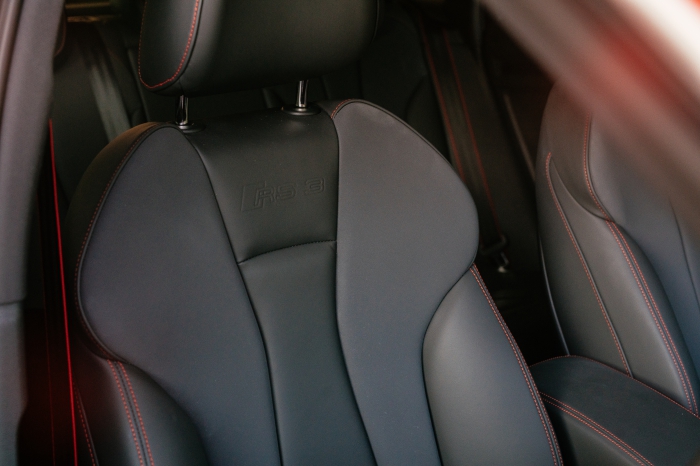
At full pelt, the RS 3’s soundtrack and incisive responses create the perfect digital experience for the petrolhead enthusiast – it’s all about the heightened pulse, bright lights and kaleidoscopic colours as though you’d taken E’s and Wizz at a Rave.
If anything we just wished that modern cars could retain the same sense of occasion and feel as their forebears to stir the soul, even when you’re not pressing hard… now that’s the sort of ‘high’ we could get used to.
PHOTOS Penoramic Publishing / David Khoo
VIDEOS Penoramic Publishing
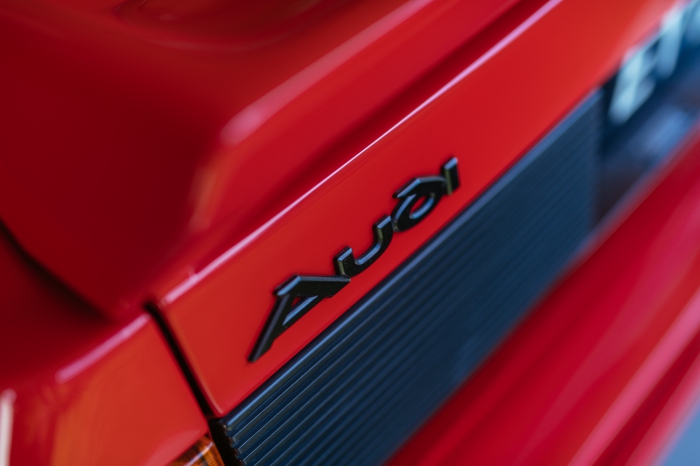
Audi 'Ur' quattro
Engine: 2144cc, inline5, turbocharged
Power/rpm: 197bhp/5500rpm
Torque/rpm: 285Nm/3500rpm
Transmission: 5spd manual
0-100km/h: 7.3secs
Top speed: 222km/h
Kerbweight: 1290kg
Audi RS 3 Sportback
Engine: 2480cc, inline5, turbocharged
Power/rpm: 367bhp/5550-6800rpm
Torque/rpm: 465Nm/1625-5550rpm
Transmission: 7spd S tronic dual-clutch
0-100km/h: 4.3secs
Top speed: 250km/h (electronically-limited)
Kerbweight: 1520kg
Fuel consumption: 8.1l/100km
CO2: 189g/km
This feature first appeared in TopGear Singapore #55 (Sept 2016)






